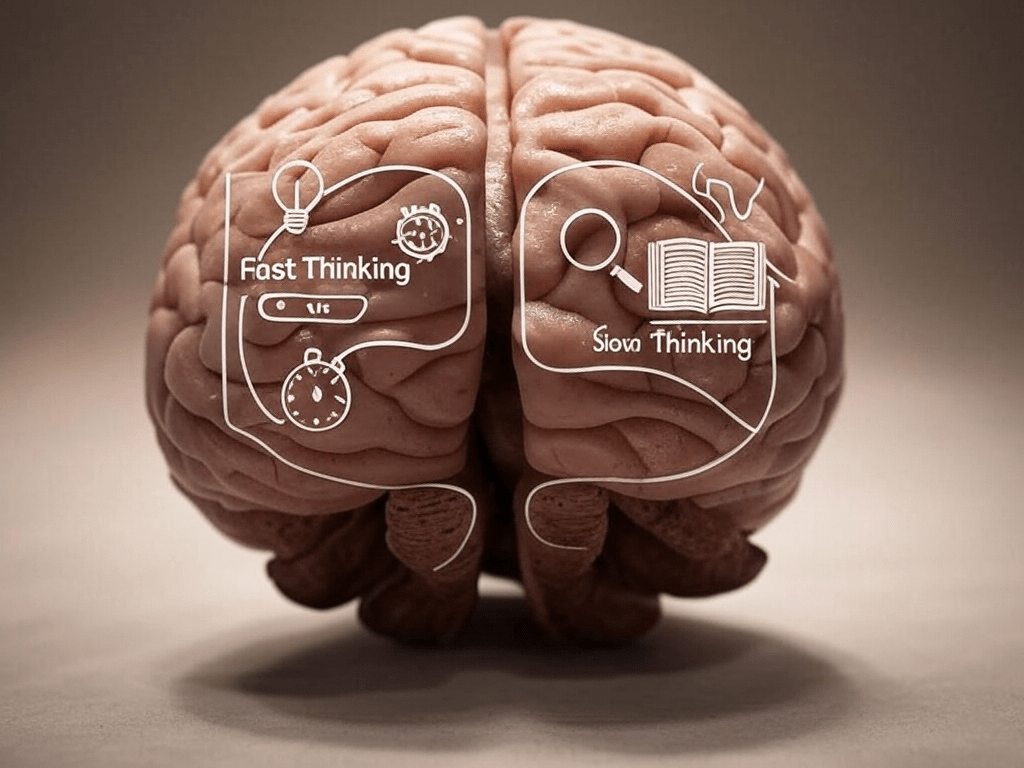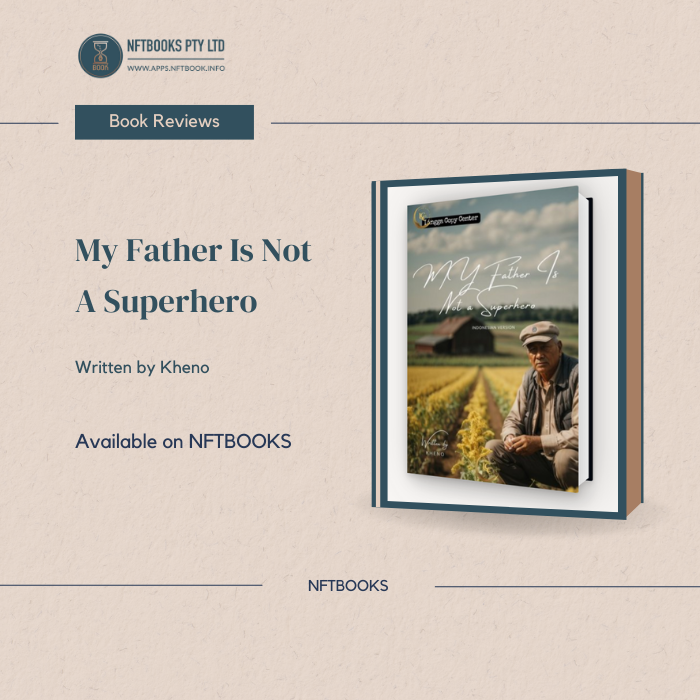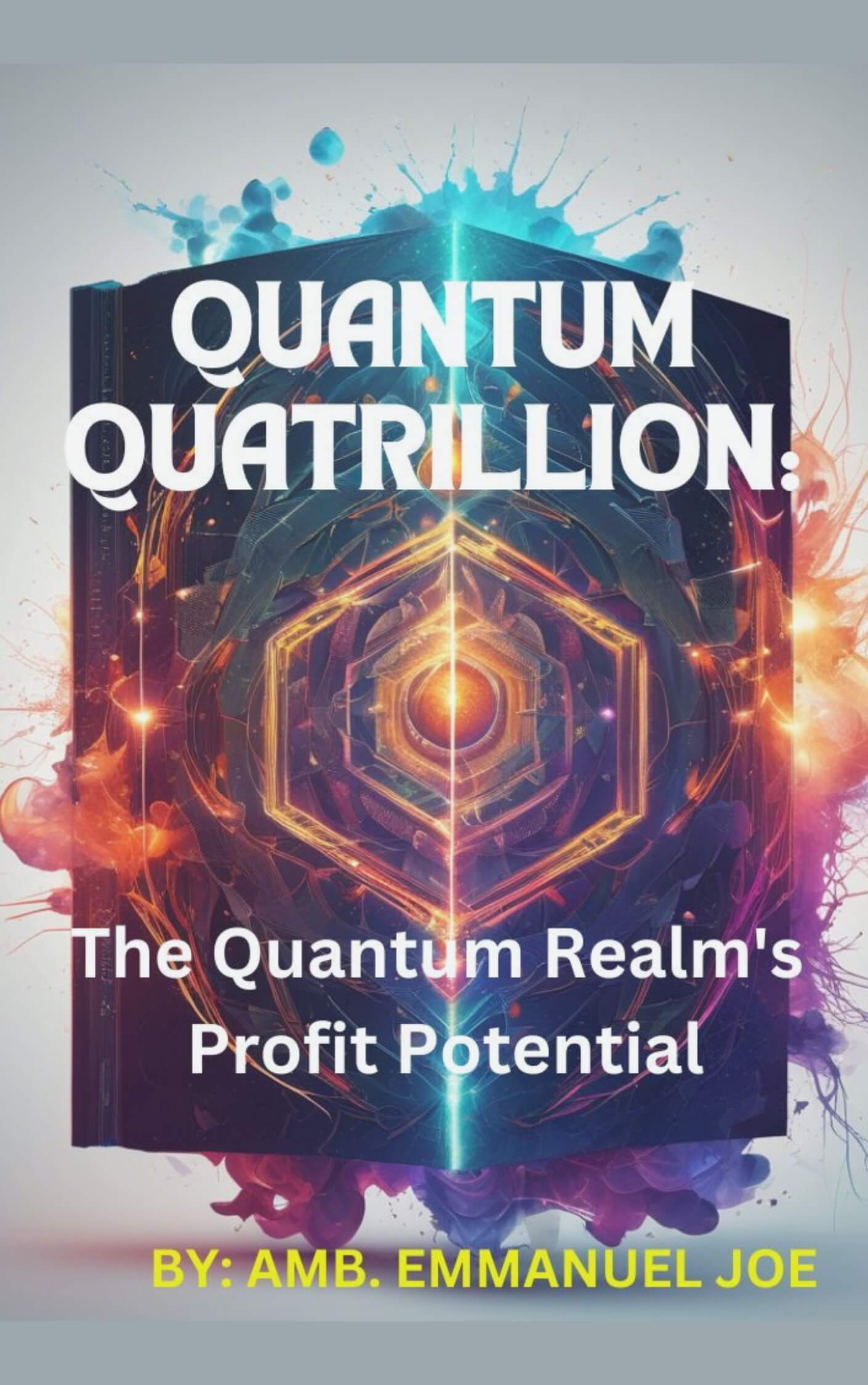Introduction
Daniel Kahneman’s Thinking, Fast and Slow is a groundbreaking book that explores the two systems of thinking that drive human decision-making. Thinking, Fast and Slow Summary explains how System 1 (fast, intuitive) and System 2 (slow, deliberate) influence our choices and judgments. By understanding these cognitive functions, we can recognize biases and improve our decision-making processes.

The Two Systems of Thinking
Daniel Kahneman introduces two distinct modes of thinking that shape human decision-making. These systems operate in different ways and influence our judgments, choices, and actions.
System 1 (Fast Thinking): This system works automatically and effortlessly. It processes information quickly and responds with intuitive judgments. For example, recognizing a familiar face in a crowd or solving simple math problems like 2+2 happens instantly. System 1 is responsible for quick decisions based on past experiences, patterns, and emotions. It helps us navigate daily life efficiently but can also lead to cognitive biases. Since it relies on shortcuts, it sometimes makes errors in judgment, especially in complex situations.
System 2 (Slow Thinking): This system is more deliberate and analytical. It engages in logical reasoning, problem-solving, and critical thinking. Unlike System 1, it requires effort and concentration. Tasks like solving a difficult equation or evaluating long-term consequences rely on System 2. It allows people to make rational and well-thought-out decisions. However, it is slower and requires significant mental energy. Because of this, people often default to System 1, even when a more logical approach is necessary.
Although these systems work together, their interaction often leads to cognitive biases. For example, people might rely too much on instinct (System 1) when logical thinking (System 2) is needed. This affects choices in finance, politics, and everyday decision-making. Recognizing these patterns can help individuals improve their reasoning and make better decisions.
Understanding Cognitive Biases and Heuristics
Kahneman explains that cognitive biases arise because people often depend on System 1 thinking. These biases shape how individuals perceive reality, make decisions, and interpret information. Understanding these biases can help reduce errors in judgment and improve decision-making.
Anchoring Bias: People rely too much on the first piece of information they receive. For example, when negotiating a salary, the initial offer strongly influences the final amount. Marketers use this by displaying high original prices before offering discounts to make deals seem better.
Availability Heuristic: This bias occurs when people judge the probability of an event based on how easily they recall similar examples. If someone recently heard about a plane crash, they may overestimate the danger of flying, even though it remains statistically safer than driving.
Loss Aversion: Losses impact people more than equivalent gains. Studies show that losing $100 feels more painful than the joy of gaining $100. This bias makes individuals overly cautious, often avoiding risks even when potential benefits outweigh possible losses.
Overconfidence Bias: Many people overestimate their knowledge and abilities. This can lead to poor decisions, such as misjudging investments or underestimating challenges. Entrepreneurs and investors often fall into this trap, assuming they have better judgment than they actually do.
Recognizing these biases allows individuals to make more rational choices. By engaging System 2 thinking more often, people can avoid these mental traps and improve their decision-making skills.
The Role of Prospect Theory in Economics
Kahneman, along with Amos Tversky, developed Prospect Theory to explain how people perceive risk and uncertainty. Traditional economic theories assume that humans act rationally. However, Prospect Theory shows that people make irrational choices because they value gains and losses differently.
Key Takeaways from Prospect Theory:
- People fear losses more than they value equivalent gains. This explains why individuals hold onto losing stocks too long but sell winning stocks too early. They want to avoid realizing a loss, even when it is the better financial decision.
- Decision-making is influenced by framing effects. The way information is presented affects choices. For instance, people are more likely to choose a surgery with a “90% survival rate” than one with a “10% mortality rate,” even though both statements mean the same thing.
- Risk aversion shapes financial behavior. Many people avoid uncertain but beneficial opportunities because of fear. For example, they may prefer a sure $50 gain over a 50% chance of winning $120, even though the latter has a higher expected value.
Prospect Theory has revolutionized behavioral economics. It helps explain why people struggle with investments, savings, and spending habits. Understanding these concepts allows businesses, policymakers, and individuals to make more informed decisions.
Practical Applications of Thinking, Fast and Slow
The concepts from Thinking, Fast and Slow have real-world applications in various industries. Understanding how people think helps businesses, investors, and individuals make smarter choices.
Business & Marketing: Companies use cognitive biases to influence consumer behavior. For example, brands use the anchoring bias to make discounts seem more attractive. They list high original prices before applying discounts to create a perception of great value. Similarly, the availability heuristic is used in advertising to make products memorable. If consumers recall an ad easily, they assume the product is more popular or effective.
Investment & Finance: Recognizing behavioral biases can improve financial decisions. Investors often suffer from overconfidence bias, leading them to make risky bets or trade too frequently. Loss aversion causes people to hold onto bad investments longer than they should. By applying rational strategies and engaging System 2 thinking, investors can avoid these common mistakes and improve financial outcomes.
Personal Decision-Making: Awareness of mental shortcuts can lead to better choices in everyday life. People often make quick judgments based on emotions, but by slowing down and applying logical reasoning, they can make more thoughtful decisions. Whether negotiating a salary, planning a budget, or making a career choice, engaging System 2 leads to better outcomes.
Understanding Kahneman’s insights helps individuals improve their thinking and avoid common errors. Applying these lessons can lead to better financial, professional, and personal decisions, ultimately improving overall quality of life.
Conclusion
Kahneman’s Thinking, Fast and Slow provides invaluable insights into human thinking and behavior. By understanding the two systems of thought and recognizing cognitive biases, we can make better decisions in all aspects of life. Whether in finance, business, or everyday choices, applying these principles can lead to more rational and informed outcomes.
Are you interested in more psychological insights that can enhance your decision-making? Share your thoughts in the comments and explore more book summaries on our blog!







